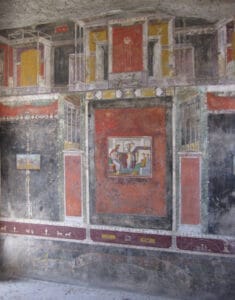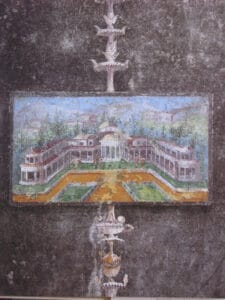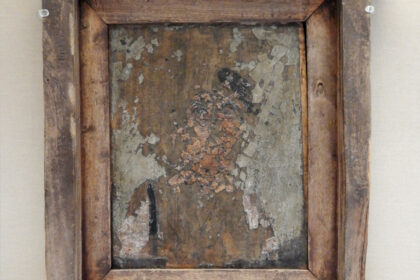
The fresco decorations found in Pompeii, Herculaneum, Ostia Antica, the Domus Aurea, and several other places where extensive and elaborate wall paintings have been found, are the most vivid depictions of Roman painting directly from its walls.
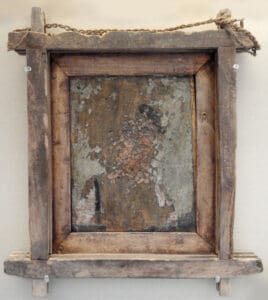
Framed wooden panel with painted portrait, 50-70 AD, tempera, 45.72 cm. h with frame, Roman; made in Egypt; British Museum
There is very little that has survived in the way of Greek or Roman free-hanging sculpture, although there is one example of a very primitive frame at the British Museum around a Romano-Egyptian ‘mummy’ image, dated from the 1st century, and one (a bit later) on a portrayal of the god Heron in Rhode Island. Both frames have what may appear to modern eyes to be a primitive construction, with crossed corners; but, where they meet, the rails are left into each other very neatly, and the portrait frame has inset grooves, probably to hold a sliding shutter. In the ‘Oxford’ system of the 1860s, this type of frame was revived, almost certainly fortuitously. How these settings would have been completed is unknown, but it can be concluded that they would have been decorated and probably gilded, providing a far more elegant and decorative look than now remains.
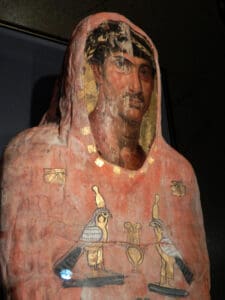
Fayum’s mummy portraits (named for the town where most of them were found) were painted with wooden panels placed as a memorial to the buried person in the mummy wrappings. Most of them come from the 2nd and 3rd centuries of the later imperial period, and despite being set in Egyptian mummies, their style is Graeco-Roman. A kind of framing feature for the portraits is the cloth mummy wrappings themselves, and some surviving examples have decorations in the Egyptian style around them.
Most of our knowledge of Roman painting derives from the frescoes on the walls of Pompeii and Herculaneum, which, when these sites in the Bay of Naples were discovered during the 18th century, fascinated the European art world. Nevertheless, in 1480, when a young Roman farmer tending his herd near the Roman Forum fell through the overgrown roof of Nero’s Domus Aurea (the Golden House), the first monumental discovery of Roman painting in the modern period was actually made.
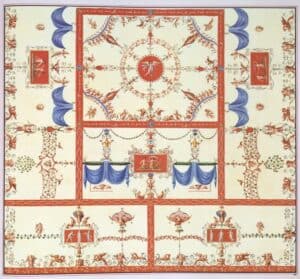
The palace was considered to be a cave at first, as it had filled up with detritus after Nero died, and so the early spectators were very similar to the ceilings and upper walls, which were covered with the finest Roman decorations to be found (‘for the emperor!’). From their discovery in a ‘grotta’ or cave, what struck them were both the framing of the elements and the ornamental decorations, which became known as grottesca. The frescoes today have deteriorated considerably from the state they must have been in when they were first rediscovered; but in 1774, Lodovico Mirri commissioned three artists (an architectural draughtsman, an artist / draughtsman and an etcher and printer) to recreate them in the form of an album of about sixty, as well as being an artist himself, a collector, publisher and dealer. These would inevitably have the original Roman wall-paintings arranged and idealized, but they are the original Roman wall-paintings.
